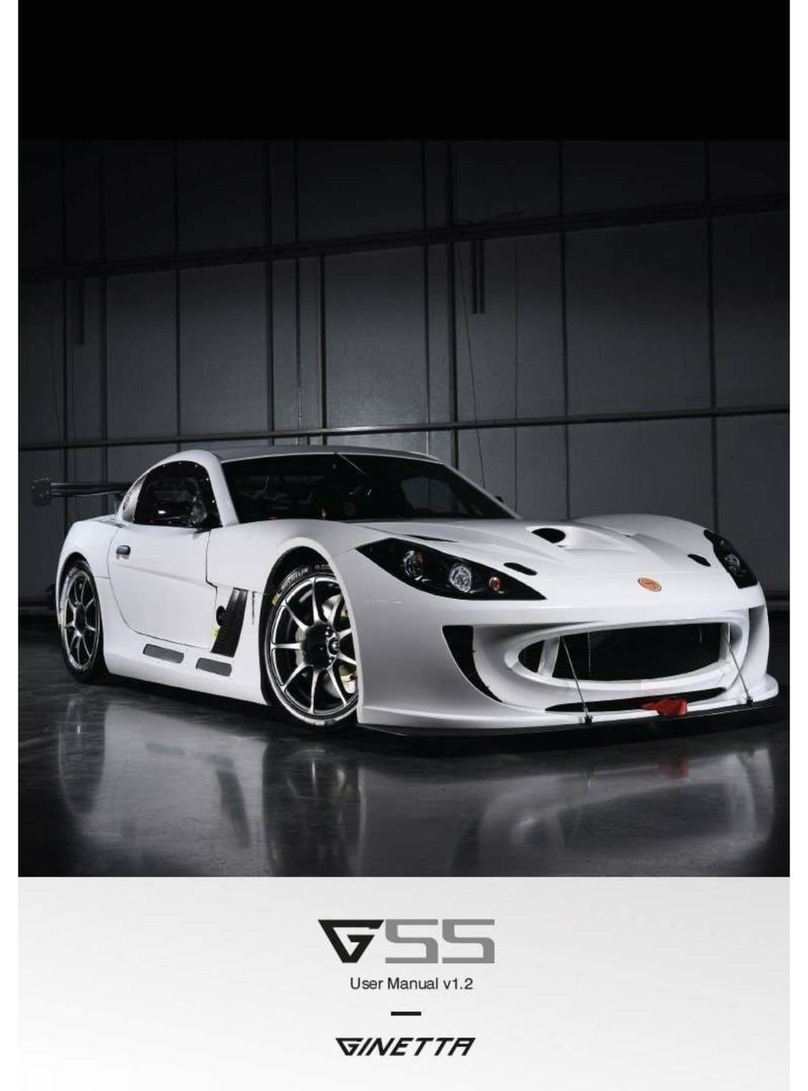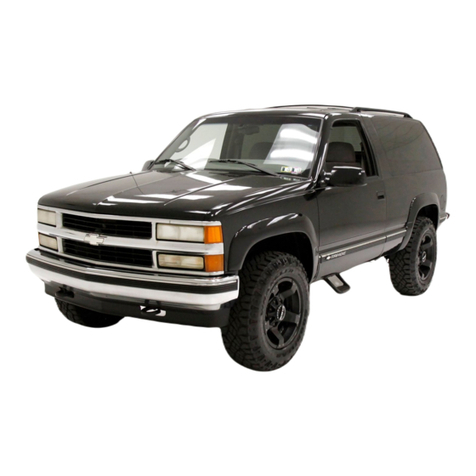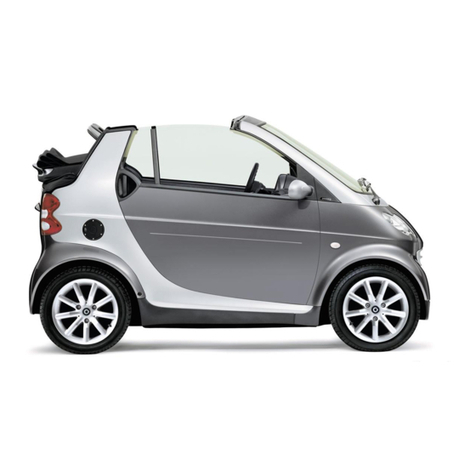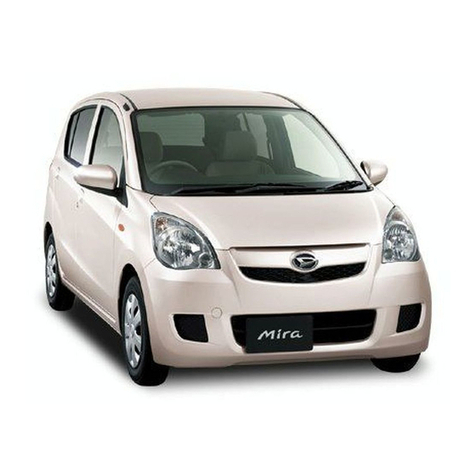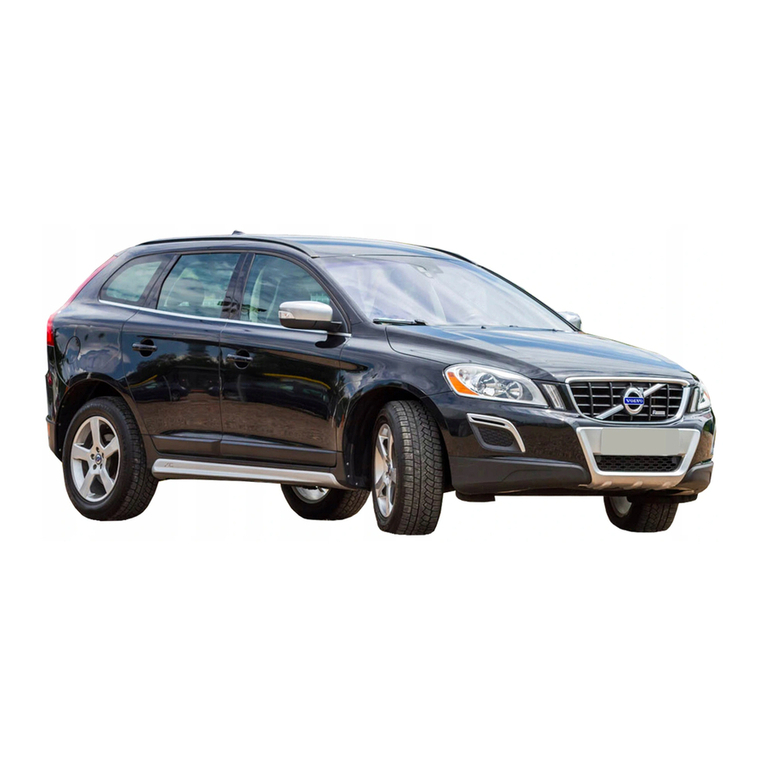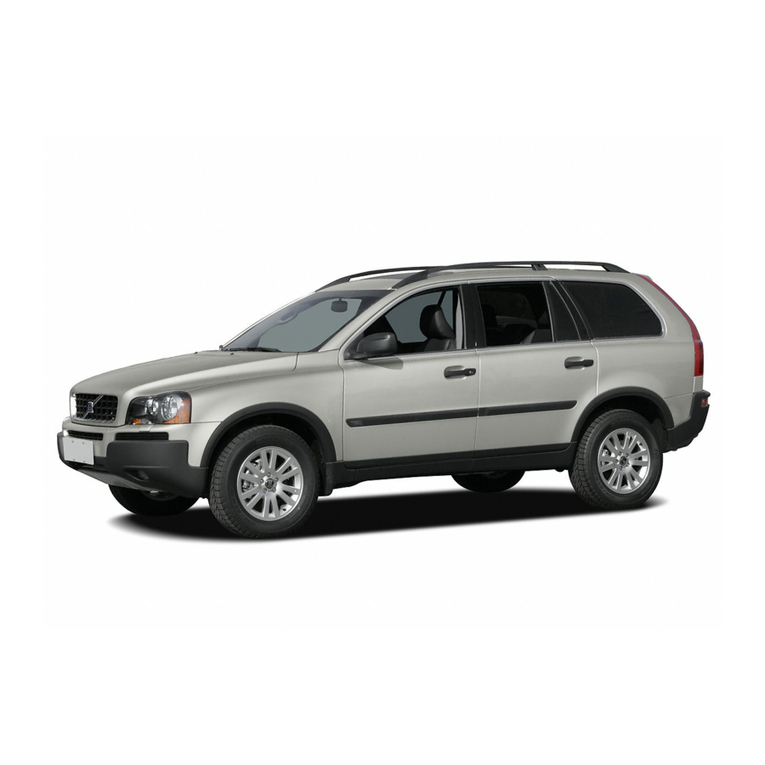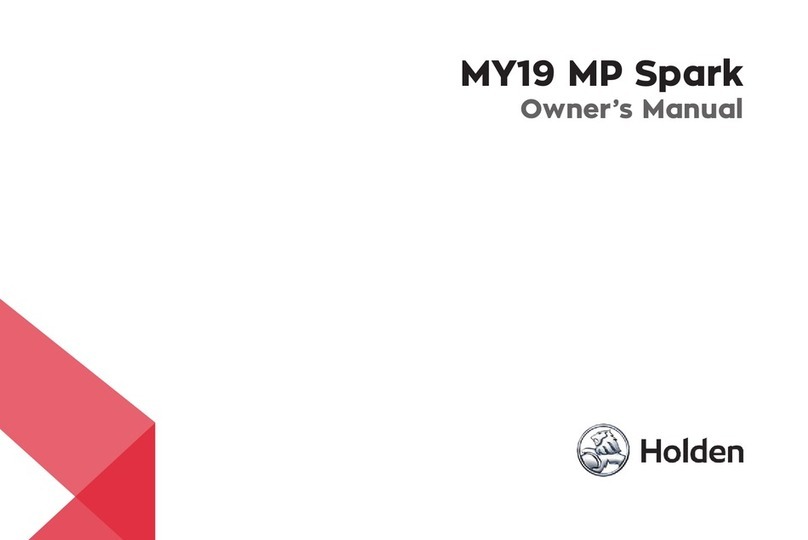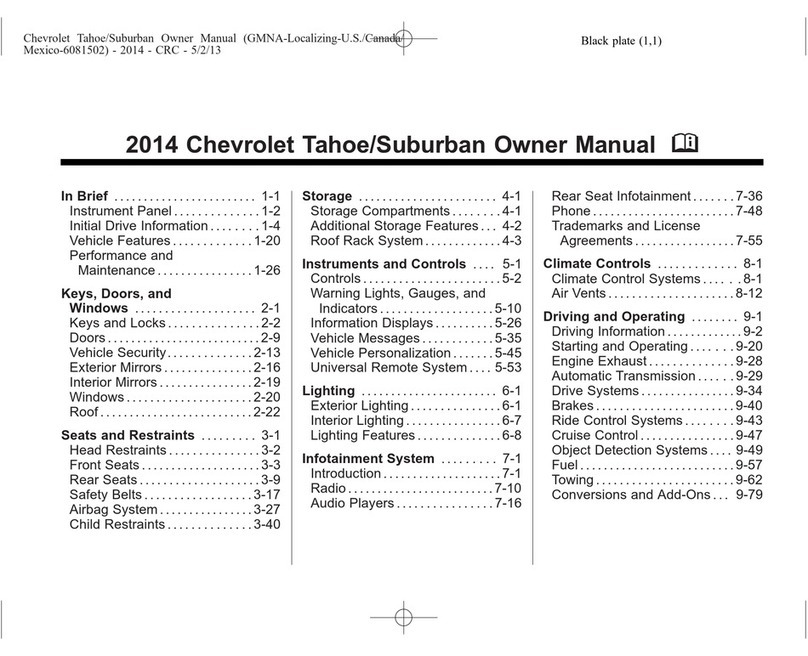Ginetta G58 Quick start guide

G58 Engineers Handbook
Version 1.2 07-12-2018

Contents 2
Change Log 3Camber Adjustment 21
General Information 4Camber / Toe Relationship 22
Fuel System 5Toe Adjustment 23
Engine Oil System 6Corner Spring Rates 24
Engine Coolant System 7Bump Rubber Rates 25
Transmission System 8Damper Adjustment 26
Wheel Torques 9Front Anti Roll Bar Adjustment 27
Engine Run Procedure 10 Rear Anti Roll Bar Adjustment 28
Engine Temps/Pressures 11 Front Heave Element Adjustment 29
Steering Wheel Controls 12 Rear Heave Element Adjustment 30
Display Pages 13 Aerodynamics 31
Switch Panel Controls 14 Clutch 32
Steering Wheel Position 15 Brakes 33
Pedal Box Adjustments 16 Anti-Lock Braking System 34
Factory Set Up 17 Electrical Power Assist Steering 35
Tyre Information 18 Electrical 36
Ride Height Adjustment 19 Air Conditioning 37
Corner Weight 20 Tightening Torque Values 38
Contact Information 39

Change Log 3
Version No. Release Date
Changes
1.0 14/11/2018
Initial Release
1.2 07/12/2018
Page size changed to A4 from 16x9, Contents hyperlinks added, Change log added

General Information
Overall length
4714
mm
Overall width
1998
mm
Height
1116
mm
Front overhang
998
mm
Rear overhang
816
mm
Wheelbase
2900
mm
4
Fuel: Minimum 98 octane petroleum
Engine Oil: Motul 5W30 Fully synthetic
Engine Coolant: Clean water + 5% Motul Mocool Additive
Gearbox Oil: Motul Gear 300 LS 75W90
Brake Fluid: Pagid RBF (330 °C, 626 °C )

Fuel System 5
•Press and hold “Fuel Reset” on steering wheel for session reset
•Continue to hold for total reset
•Fuel drain procedure:
•Connect to Staubli dry break
•Master switch on
•Press “Lift Fuel” on keypad
Fuel reset procedure:
•Max. capacity - 103L
•Collector capacity - 7L
•External post pump filter - 10 Micron
•Baseline average consumption - 0.70 Ltrs / Km
•Fuel multiplier in dash:
1. Save current dash configuration to disk
2. Calculate actual consumption = (fuel in - fuel out)
3. Calculate actual fuel usage = actual consumption / No. laps
4. Calculate error factor = (dash consumption –actual consumption) / actual consumption
5. Identify current fuel multiplier in Dash Manager. “Calculations”, “Fuel Prediction”
6. Calculate new fuel multiplier = current multiplier / (1 + error factor)
7. Rename and save dash configuration to disk before sending to car
Roll-Over Valve
Vent
Fill
Regulator
Lift Pump
Lift Pump
High
Pressure
Pumps
Staubli
Dry Break
External Filter
Pressure Sensor

Engine Oil System
6
Bellhousing Hot Weather Kit Oil Level (mm)
Cast Yes 143
Cast No 216
Billet Yes 95
Billet No 133
Oil dip procedure:
1. Oil temperature at 75°C (+/- 5°C)
2. Hold engine revs at 4000RPM for 10 seconds
3. Turn off the engine using the STOP button on the switch
panel keypad
4. Measure the oil level as quickly as possible after turning
off the engine
5. Adjust the oil level if necessary using the dip stick guide
Oil measurement:
Oil catch tank:
•Ensure catch tank is drained after every session
•Measure oil out of tank to calculate oil usage per hour

Engine Coolant System
7
•Do not remove header tank cap with coolant temperature above 30 °C
•To set water level, reach inside header tank with one finger. Ensure fingertip is wet
•With ignition off, press “Water” on keypad to run water pumps and bleed system
•Squeeze silicone hose on pump outlets to feel for air pockets
•To further bleed the system (from dry) slacken non auto bleeds on radiators until constant water flow
•Ensure all auto bleeds have return flow to header tank
•Maximum delta temperature between cylinder heads: 10-15 °C
Ideal water
level

Transmission Oil:
•Dry system: 2.2L
•With oil in cooler: 1.8L
Transmission System 8
CV Joints:
•Grease type: NEO HPCC#1
•Grease amount: 60 gram
•Fastener type: M10 washer K-nut
•Fastener torque: 55Nm with Loctite 2400 (12mm socket)
Max engine speed: 6750 RPM
Gear / final drive Fraction Ratio
1st 13/37 2.846
2nd 13/29 2.308
3rd 14/25 1.786
4th 17/25 1.471
5th 16/20 1.250
6th 23/25 1.087
Final drive 11/31 2.818
Drive ramp angle 60
Coast ramp angle 30
Clutch pack preload 90Nm
G58 Build Specification

Wheel Torques 9
•Wheel Nut Thread: M30 x 2.0
•Wheel Nut Torque: 300 pound foot / 407 newton meter
•Recommended wheel gun: Paoli DP 176 ¾ inch drive
•Ensure regulators are set for wheel guns by slowly increasing pressure, until torque wrench clicks when
undoing the nut.
•Wheel nuts tighten to front of car
•Wheel nuts loosen to rear of car
General Information:
Maintenance:
•Wheel bearings visually inspected every 1200km,
recommended component life 3000km
•Upright assembly visually inspected every 1200km, rebuilt
every 3000km and recommended component life 15000km
•Clean threads and pankel mechanism every 1200 km
•After cleaning re-grease with ZX1 or Copper grease
•For more information refer to Ginetta G58 –Lifing
Document
•Information given provides an indication for servicing
and should not be treated as a guarantee

Engine Run Procedure 10
•Ensure car is sat on High stands or Air jack safeties. Skates as a minimum (Not hub stands, wheels or Air jacks)
•Install run up hubs. Rear wheels as a minimum
•Check engine coolant level
•Ensure water header tank, engine oil and engine oil catch tank caps are installed
•Turn master switch on
•Plug in jump battery
•ABS to position 12, TC to position 0
•Cycle through to main dash warm up page
•Crank for oil pressure (No ignition)
•Ignition on (Check for fuel pressure)
•Crank for engine start
•Let engine idle and systematically check the following systems for leaks: Fuel, Engine oil, Engine coolant, Transmission oil
•Run engine until engine oil temp reaches 75°C (+/- 5°C)
•Water radiator fans will turn on at 90 °C coolant temp, and turn off at 85 °C (Fans will not run when wheels are rotating)
•Hold engine speed at 4000 rpm for 10 seconds
•Kill engine using “STOP” button
•Measure engine oil level as quickly as possible
•Adjust the oil level and re-fit cap (Repeat oil dip procedure if required)
•“START” car and let the engine idle for 10 seconds
•Shift through all forward gears
•Hold 6th to build gearbox temperature (Ensure not to exceed 93-95 °C coolant temperature)
•Shift back to neutral
•Kill engine using “STOP” button
•Leave master switch on for 1-2 mins after engine stop. (Keeps water pumps running to prevent internal hot/cold spots)

Engine Temps/Pressures 11
•Stabilised temperatures and pressures should fall within the values shown
•If temperatures are too low, tape the radiator ducts vertically from the inside edge outwards
•If temperature are too high, reduce engine rpm until the temperature reduces
Channel Name Minimum
Value
Maximum
Value
Units
Engine Speed N/A 6750 RPM
Coolant Temperature Sensor 1 60 108 °C
Coolant Temperature Sensor 2 60 108 °C
Engine Oil Temperature 60 140 °C
Airbox Temperature 0 50 °C
Transmission Temperature 0 155 °C
Engine Oil Pressure See Image Bar
Fuel Pressure 3.45 5.6 Bar
Battery Voltage 7 17 V
Engine Oil Pressure:
•Check no dramatic lows in “Engine Oil Pressure” vs “Engine Speed”
•Ideally should be a linear plot
•Compare “Engine Oil Pressure” with “Engine Oil Pressure Warning Minimum Value”
•When minimum value > oil pressure investigate cause
•Start with checking correct oil level and dip procedure
•If persistent use low rpm through problem area of circuit
•Contact Ginetta if unsure about any parameters

Steering Wheel Controls
12
Flashes high
beam 4 times
Radio
(Non Latching)
Press and hold
to shift out
of/into neutral
with paddles
Resets fuel used
value
Activates pit lane
speed limit
(Latching)
Cycle
through display
pages Engine map
adjustment
(Currently Inactive)
Alarm
cancel/reset
Traction control adjustment
0 = off
Higher number = more assistance
Drink
(Non Latching)
Down shift
Up shift

Display Pages 13
Warm Up Pages Practice Pages Race Pages
Single press PAGE button to cycle through sub level pages
Long press PAGE button to cycle through top level pages (Warm Up/Practice/Race)

Switch Panel Controls
Switch
No. Function Description
Latching?
1 START
Starts engine. Release when engine fires.
N
2 IGNITION
Activates engine ignition.
Y
3 STOP
Press to turn engine off. This kills the engine , then reinstates ignition after 4s. This saves
re
-
activating ignition after engine stop during a pit stop. Lift pumps continue filling the fuel
collector.
Y for 4s
4 High Beam
Activates high beam on. Main beam is always on when engine rpm >900. Also dims dash for
night & activates cockpit light power. Tail
lights active with battery to illuminate the car
when stalling during night races.
Y
5 Left Indicator
Activates left indicator.
Y
6 Right Indicator
Activates left indicator.
Y
Both Indicators Simultaneously for 3 seconds
Performs light test. All lights will illuminate to test whilst ignition is off.
Y
7 Rain
Activates rain light.
Y
8 Wipers
Activates wipers at full speed.
Y
9 Inter
Activates wipers at intermittent speed.
Y
10 Water
Activates water pumps when ignition is off to bleed the cooling system.
Y
11 AC
Activates air conditioning (Fan starts then temperature is automatically controlled).
Y
12 Front Screen Heater
Not currently an option.
Y
13 Fuel Rest
Inactive.
N/A
14 Speed Limiter
Full course yellow (code 60).
Y
15 Lift Fuel
Activates all fuel pumps to drain the cell and collector when ignition is off.
Y
16 Brake Bias Adjuster
Clockwise to wind the bias forward, anti clockwise for the rear. (1.5% per full turn)
N/A
17 Power Master Switch
Activates battery isolator.
Y
18 Fire Extinguisher Arming
Move switch up to arm the extinguisher
Y
19 Fire Extinguisher
Press to activate extinguisher (only for emergencies)
Y
20 EPAS Rotary
Adjusts the EPAS assistance. The higher the number the more assistance. Lowest position is
off
N/A
21 Circuit Breakers
Electrical trips for EPAS power steering and ABS
Y
22 ABS Rotary
Activates various levels of ABS when ignition is on.
2216
17
18
20
19
21
1
2
3
6
5
11
14
98
713 10
15
412
14

Steering Wheel Position
15
Steering Wheel Height:
•Slacken top mount pinch bolt
•Hold steering wheel at desired height
•Tighten top mount to 27Nm (6mm hex key + 10mm spanner)
•Range of adjustment approx. 90mm from max to min
Steering Wheel Reach:
•Slacken two grub screws
•Remove one at a time, clean and apply Loctite 243
•Hold Steering wheel at desired reach
•Minimum column depth 83mm
•Maximum column depth 103mm
•Ensure wiring loom not caught in column slot
•Tighten grub screws to 14Nm (5mm hex key)
•Ensure grub screws are centred on flats of steering column

Pedal Box Adjustments 16
Pedal Box Mount Locations:
•Ensure mounting bolts are torqued to 45Nm with 243 Loctite
(6mm hex key)
•140mm: Front chassis –Master cylinder mounting face (A1)
•158mm: Front chassis –Master cylinder mounting face (B1)
•176mm: Front chassis –Master cylinder mounting face (A2)
•194mm: Front chassis –Master cylinder mounting face (B2)
Pushrod Lengths:
•Throttle: 93mm
•Front Brakes: 84mm
•Rear Brakes 84mm
•Clutch: 75mm
Brake Bias:
•Factory setting: Front 56%
•Adjustment: 1 turn clockwise = +1.5% front bias
•To test bias:
•Cycle to warm up dashboard page
•Hold brake pressure and check bias on screen
•Adjust to desired value in small increments to prevent the cable
binding
•1.5 –2mm play in brake balance bar is normal
Pedal Locations:
•Throttle pedal is fixed
•Brake pedal is 15mm closer to driver compared to throttle
•Pedal pad locations adjustable. Torque to 18Nm with Copper slip
(5mm hex key)
•Throttle side guard adjustable. Torque to 18Nm with 243 Loctite
(4mm hex key + 7mm spanner)

Factory Set Up 17
Set Up equipment:
Item No
Part No
Description
Qty / Car
1
GIN
-LMP3-T0107
Tracking Splitter Mount Assembly
1
2
GIN
-LMP3-T0078
Set Up Nose Box Assembly
1
3
GIN
-LMP3-T0079
Rear Tracking Mount Assembly
1
4
GIN
-LMP3-T0098
Front RH Measure Tools Assembly
1
5
GIN
-LMP3-T0099
Rear RH Measure Tools Assembly
1
6
GIN
-LMP3-T0096
Front Set Up Wheel Assembly
2
7
GIN
-LMP3-T0097
Rear Set Up Wheel Assembly
2

Tyre Information 18
Manufacture Tyre Type Size Compound Diameter Circumference
Michelin Front Slick/Pilot Sport GT 30/65-18 S8L 650mm 1.995m
Rear Slick/Pilot Sport GT 31/71-18 S9L 711mm 2.185m
Front Wet/Pilot Sport GT 30/65-18 P2I 653mm 2.057m
Rear Wet/Pilot Sport GT 31/71-18 P2L 711mm 2.232m
Hankook Front Slick/Ventus F200 300/660/R18 C7 656mm 2.061m
Rear Slick/Ventus F200 320/710/R18 C7 706mm 2.218m
Front Wet/Ventus Z207 300/660/R18 W5 674mm 2.117m
Rear Wet/Ventus Z207 320/710/R18 W5 706mm 2.218m
Dunlop Front Slick 305/660/R18 P2F-A/C 2.035m
Rear Slick 312/705/R18 P2F-A/C 2.195m
Front Wet 305/660/R18 2.035m
Rear Wet 312/705/R18 2.195m
Minimum cold pressure: 1.00 Bar
Target hot pressure: 1.85-1.90 Bar
Target temperature spread: 20-25 °C
For more data please contact us with your request

Ride Height Adjustment 19
Measurement:
•Ride height is defined as the distance between the ground and the
cars floor (Not plank)
•Correct measurement location shown below:
•Front: level with Front axle centre, just behind nylon skid
•Rear: level with Rear axle centre, on flat section of floor
Adjustment Pushrod length change Front Ride height change Rear Ride Height change
One flat on adjuster 0.5 mm 0.86 mm 1.40 mm
Half turn on adjuster 1.5 mm 2.59 mm 4.20 mm
Full turn on adjuster 3 mm 5.18 mm 8.40 mm
Half turn on lower rod end 0.6 mm 1.09 mm 1.78 mm
Full turn on lower rod end 1.3 mm 2.18 mm 3.56 mm
Adjustment:
•Raise car on air jacks (ensure safety's or skates are in place)
•Loosen pinch bolt on pushrod
•Turn adjuster by required amount (Refer to table below, 22mm spanner)
•Ensure no more than 13mm thread showing
•For more adjustment reset the adjuster and wind out lower rod end
•Tighten pinch bolt to 16Nm (5mm hex key + 7mm spanner)
•Lower car and re-measure
13mm MAX

Corner Weight 20
Adjustment:
•Make small changes in ride height and document each change
•To increase a given corner weight raise the ride height on that corner
•This will also increase weight on the diagonally opposite corner
•And reduce weight on the other two corners
•Always attempt to maintain ideal ride heights.
•E.g. rather than one full turn up make two smaller changes of
half turn up on one side, half turn down on other side
•Ensure left –right ride heights difference is as small as possible
•Front ride height more critical than rear
•For small changes we recommend changing rear ride heights to keep
the front aero platform level
Measurement:
•Lower car onto corner weight scales
•Bounce front and rear end simultaneously
•Let car settle
•Target:
•0-2kg difference corner weight across front axle
•50/50 weight distribution left –right with driver weight
•Same ride height across front axle
Table of contents
Other Ginetta Automobile manuals
